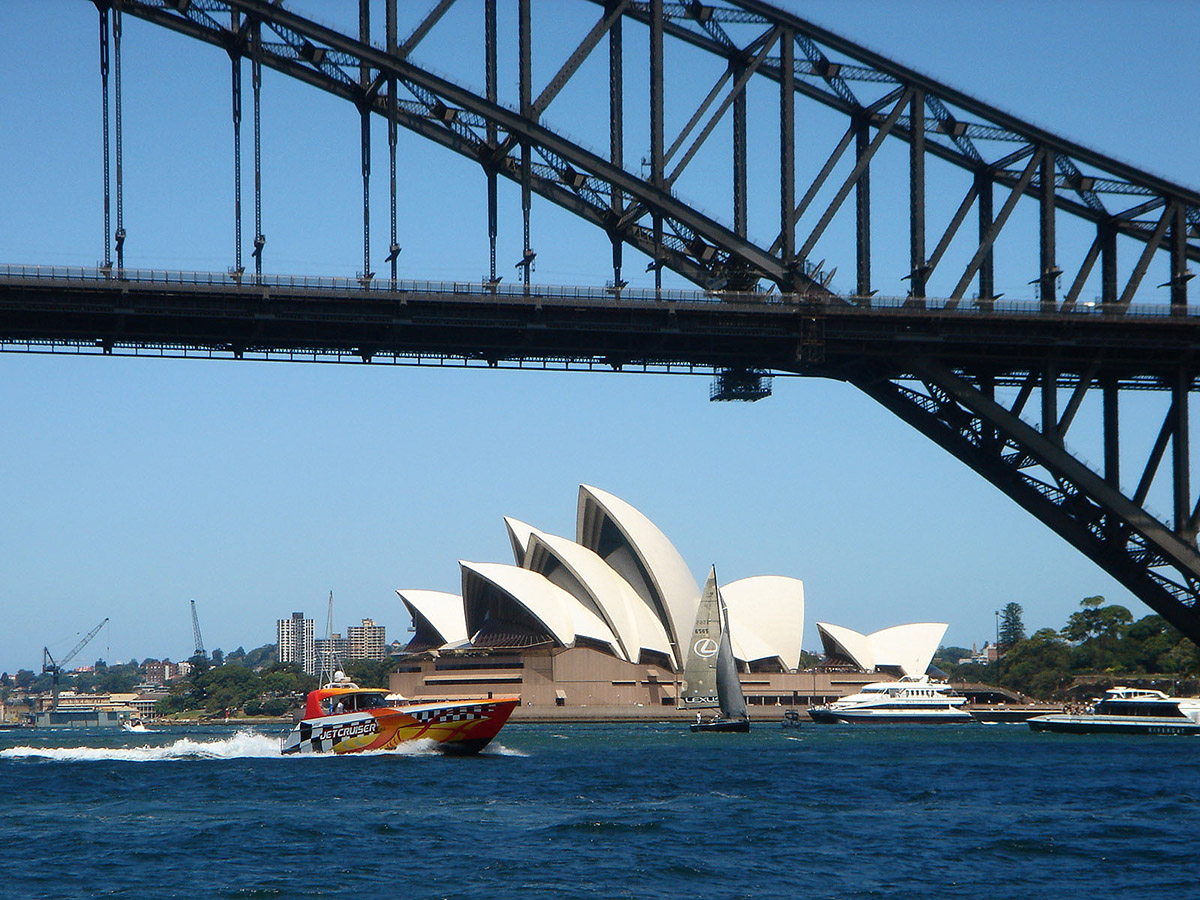 The UK and Australia are set to sign a free-trade deal at the G7 summit in Cornwall on 11–13 June. This will eventually give tariff-free access to each other’s markets, with existing tariffs being phased out over a 15-year period. It is the first trade deal not based on an existing EU template. The government hopes that it will be followed by trade deals with other countries, including New Zealand, Canada and, crucially, the USA.
The UK and Australia are set to sign a free-trade deal at the G7 summit in Cornwall on 11–13 June. This will eventually give tariff-free access to each other’s markets, with existing tariffs being phased out over a 15-year period. It is the first trade deal not based on an existing EU template. The government hopes that it will be followed by trade deals with other countries, including New Zealand, Canada and, crucially, the USA.
But what are the benefits and costs of such a deal?
Trade and comparative advantage
The classic economic argument is that free trade allows countries to benefit from the law of comparative advantage. According to the law, provided opportunity costs of various goods differ in two countries, both of them can gain from mutual trade if they specialise in producing (and exporting) those goods that have relatively low opportunity costs compared with the other country. In the case of the UK and Australia, the UK has a comparative advantage in products such as financial services and high-tech and specialist manufactured products. Australia has a comparative advantage in agricultural products, such as lamb, beef and wheat and in various ores and minerals. By increasing trade in these products, there can be a net efficiency gain to both sides and hence a higher GDP than before.
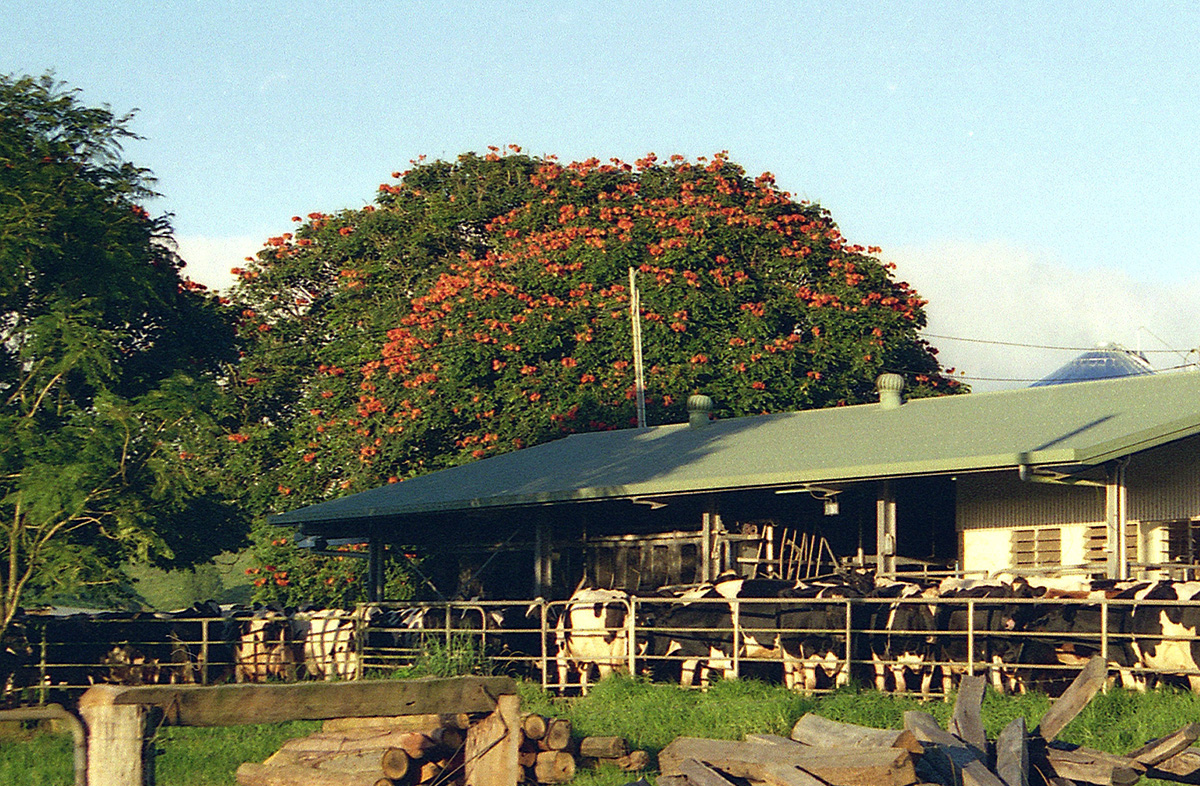 There is clearly a benefit to consumers in both countries from cheaper products, but the gains are likely to be very small. The most optimistic estimate is that the gain in UK GDP will be around 0.01% to 0.02%. Part of the reason is the physical distance between the two countries. For products such as meat, grain and raw materials, shipping costs could be relatively high. This might result in no cost advantage over imports from much nearer countries, such as EU member states.
There is clearly a benefit to consumers in both countries from cheaper products, but the gains are likely to be very small. The most optimistic estimate is that the gain in UK GDP will be around 0.01% to 0.02%. Part of the reason is the physical distance between the two countries. For products such as meat, grain and raw materials, shipping costs could be relatively high. This might result in no cost advantage over imports from much nearer countries, such as EU member states.
But modern trade deals are less about tariffs, which, with various WTO trade rounds, are much lower than in the past. Many imports from Australia are already tariff free, with meat currently having a tariff of 12%. Modern trade deals are more about reducing or eliminating non-tariff barriers, such as differing standards and regulations. This is the area where there is a high degree of concern in the UK. Import-competing sectors, such as farming, fear that their products will be undercut by Australian imports produced to lower standards.
Costs of a trade deal
In a perfectly competitive world, with no externalities, labour mobile between sectors and no concerns about income distribution, eliminating tariffs would indeed provide an efficiency gain. But these conditions do not hold. Small farmers are often unable to compete with food producers with considerable market power. The danger is that by driving out such small farmers, food production and supply might not result in lower long-run prices. Much would depend on the countervailing power of supermarkets to continue bearing down on food costs.
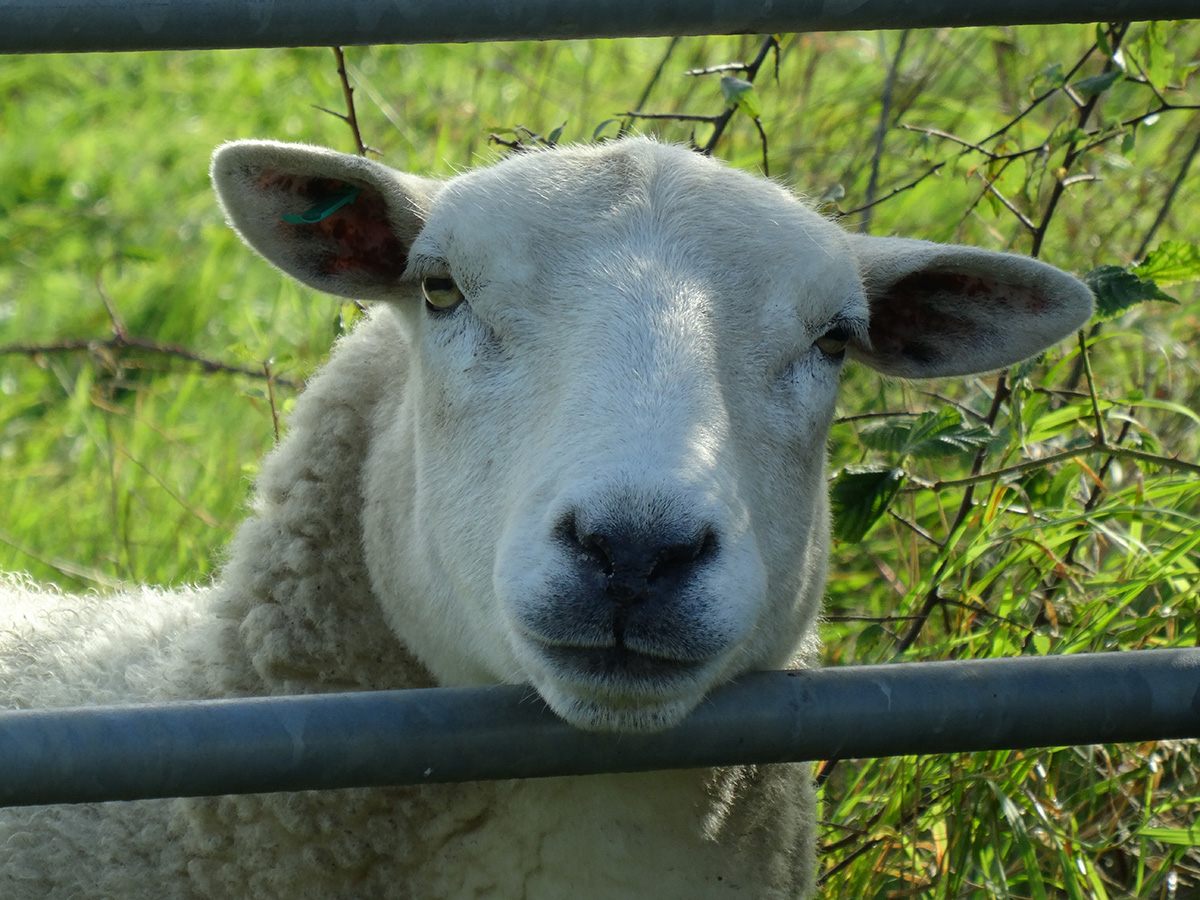 But the question of price is probably the least worrying issue. Meat and grain is generally produced at lower standards in Australia than in the UK, with various pesticides, fertilisers and antibiotics being used that are not permitted in the UK (and the EU). Unless the trade deal can involve UK standards being enforced on products produced in Australia for export to the UK, UK farmers could be undercut by such imports. The question then would be whether labelling of imported food products could alert consumers to the different standards. And even if they did, would consumers simply prefer to buy the cheaper products? If so, this could be seen as a market failure with consumers not taking into account all the relevant health and welfare costs. Better quality food could be seen as a merit good.
But the question of price is probably the least worrying issue. Meat and grain is generally produced at lower standards in Australia than in the UK, with various pesticides, fertilisers and antibiotics being used that are not permitted in the UK (and the EU). Unless the trade deal can involve UK standards being enforced on products produced in Australia for export to the UK, UK farmers could be undercut by such imports. The question then would be whether labelling of imported food products could alert consumers to the different standards. And even if they did, would consumers simply prefer to buy the cheaper products? If so, this could be seen as a market failure with consumers not taking into account all the relevant health and welfare costs. Better quality food could be seen as a merit good.
Then there are the broader social issues of the protection of rural industries and societies. Labour is relatively immobile from farming and there could be a rise in rural unemployment, which could have local multiplier effects, leading to the decline of rural economies. Rural ways of life could be seriously affected, which imposes costs on local inhabitants and visitors.
Trade itself imposes environmental costs. Even if it were privately efficient to transport products half way around the world, the costs of carbon emissions and other pollution may outweigh any private gains. At a time when the world is becoming increasingly concerned about climate change, and with the upcoming COP26 conference in Glasgow in November, it is difficult to align such a trade deal with a greater commitment to cutting carbon emissions.
Articles
- UK makes free-trade offer to Australia despite farmers’ fears
BBC News (22/5/21)
- UK-Australia trade deal: What are the arguments for and against?
BBC News, Chris Morris (21/5/21)
- Australia–UK trade deal can help spur post-pandemic recovery
The Conversation, David Collins (20/5/21)
- Australia will set the precedent for UK trade deals
Prospect, David Henig (21/5/21)
- Britain beefs with Australian farmers as Boris Johnson backs trade deal
Sydney Morning Herald, Mike Foley and Bevan Shields (20/5/21)
- Boris Johnson defends Australia trade deal that will allow cheap foreign meat imports …
Mail Online, David Wilcock (19/5/21)
- City executives raise concerns over hidden costs to trade deals
Financial Times, Daniel Thomas (22/5/21)
- Australia trade deal: Ministers discuss British farmers’ concerns
BBC News (21/5/21)
- Boris Johnson Faces His First Real Brexit Trade Test
Bloomberg, Therese Raphael (21/5/21)
- UK-Australia trade deal could mean children and patients eating meat reared in ways illegal in UK, warn experts
Independent, Jane Dalton (11/5/21)
- Australian farmers rush to reassure UK over looming free trade agreement
The Guardian, Amy Remeikis (19/5/21)
- Brexit: Boris Johnson warned trade deal with Australia could ‘decimate’ British farming
Independent, Adam Forrest (20/5/21)
- Truss’s naivety on trade with Australia could leave the UK exposed
The Observer, Phillip Inman (22/5/21)
- ‘Irresponsible’ Australia trade deal will bring ruin for UK farmers, critics warn
The Observer, James Tapper and Toby Helm (23/5/21)
- Brexit: Boris Johnson rejects claim UK-Australia trade deal would see farmers ‘lose their livelihoods’
Sky News, Tom Rayner (19/5/21)
- Small farms have a huge role to play in our sustainable future
The Guardian, Charles, Prince of Wales (23/5/21)
- Farmers’ opposition to UK-Australia trade deal grows
BBC News, Claire Marshall (2/6/21)
- UK livestock farmers fear Australia trade deal will threaten way of life
Financial Times, Judith Evans and Sebastian Payne (8/6/21)
- The UK–Australia trade deal is not really about economic gain – it’s about demonstrating post-Brexit sovereignty
The Conversation, Tony Heron and Gabriel Siles-Brügge (18/6/21)
Questions
- Why might the UK government be very keen to sign a trade deal with Australia?
- Does the law of comparative advantage prove that freer trade is more efficient than less free trade? Explain.
- What externalities are involved in the UK trading with Australia? Are they similar to those from trading with the USA?
- If a trade deal resulted in lower food prices but a decline in rural communities, how would you establish whether this would be a ‘price worth paying’?
- If some people gain from a trade deal and others lose and if it were established that the benefits to the gainers were larger than the costs to the losers, would this prove that the deal should go ahead?
 Many countries have experienced soaring house prices in recent years. To find out why, you need to look at demand and supply.
Many countries have experienced soaring house prices in recent years. To find out why, you need to look at demand and supply.
Low mortgage interest rates and more relaxed lending rules in the last couple of years have stimulated demand. In some countries, such as the UK, demand has been further boosted by governments providing increased help to buyers. In others, various tax breaks are given to house purchasers.
Typically the rise in demand has not been matched by an equivalent rise in supply. Social house building has slowed in many countries and building for private purchase has often be hampered by difficulties in obtaining appropriate land or getting planning permission.
The articles linked below look at the situation in Australia. Here too house prices have been soaring. Over the past 30 years they have grown by 7.25% per year – way above the growth in incomes. As the second article below states:
So expensive are homes becoming that the share of median household income devoted to mortgage payments for Australians aged 35 to 44 has more than doubled in 30 years. Incredibly, it’s happened at a time when mortgage rates have slid to their lowest on record.
But why? Again, to understand this it is necessary to look at demand and supply.
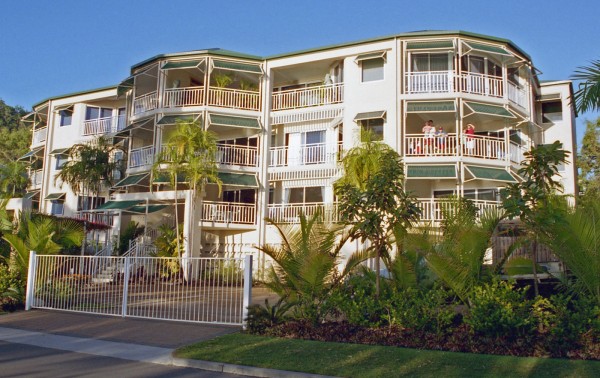 Strong population growth combined with easy availability of mortgage loans, low interest rates and tax breaks for both owner occupiers and property investors have stoked demand, while new building has lagged behind. As far as investors are concerned, any shortfall of rental income over mortgage payments (known as negative gearing) can be offset against tax – and then there is still the capital gain to be made from any increase in the property’s price.
Strong population growth combined with easy availability of mortgage loans, low interest rates and tax breaks for both owner occupiers and property investors have stoked demand, while new building has lagged behind. As far as investors are concerned, any shortfall of rental income over mortgage payments (known as negative gearing) can be offset against tax – and then there is still the capital gain to be made from any increase in the property’s price.
But in some Australian towns and cities, price rises have started to slow down or even fall. This may be due to a fall in demand. For example, in Perth, the ending of the commodity boom has led to a fall in demand for labour in the mining areas; mine workers often live in Perth and fly up to the mining areas for shifts of a week or more.  The fall in demand for labour has led to a fall in demand for housing.
The fall in demand for labour has led to a fall in demand for housing.
House price changes are amplified by speculation. People rush to buy houses when they think house prices will rise, further pushing up prices. Landlords do the same. This speculation fuels the price rises. Speculation also amplifies price falls, with people with houses to sell keen to sell them quickly before prices fall further. Potential purchasers, including property investors, hold back, waiting for prices to fall.
Articles
House prices are surging because of low supply – it’s Economics 101 The Guardian, Stephen Koukoulas (27/10/16)
Who’s to blame for rising house prices? We are, actually. Sydney Morning Herald, Peter Martin (27/10/16)
The Price of Australia’s Real Estate Boom The New York Times, A. Odysseus Patrick (17/10/16)
Solutions beyond supply to the housing affordability problem The Conversation, Nicole Gurran (24/10/16)
Data
Residential Property Price Indexes: Eight Capital Cities Australian Bureau of Statistics (20/9/16)
Questions
- Identify the specific demand factors that have driven house price rises in Australia.
- How are the price elasticities of demand and supply relevant to explaining house price rises? Use a diagram to illustrate your analysis.
- What determines the rate of increase in house prices?
- Explain what is meant by ‘negative gearing’. How is the tax treatment of negative gearing relevant to the property market?
- What are the arguments for and against giving tax breaks for house purchase?
- Why are rising prices seen as politically desirable by politicians?
- What practical steps could a government (central or local) take to increase the supply of housing? Would such steps always be desirable?
- Does speculation always amplify house price changes? Explain.
- How are house prices related to inequality?
 Australia held a general election on 2 July 2016. The Liberal/National coalition narrowly won in the House of Representatives, gaining a substantially reduced majority of 77 of the 150 seats, to Labor’s 68 and other parties’ 5 seats. One campaign issue for all parties was the destruction of the Great Barrier Reef, which is seen as an environmental disaster. Each party had proposals for tackling the problem and we examine some of them here.
Australia held a general election on 2 July 2016. The Liberal/National coalition narrowly won in the House of Representatives, gaining a substantially reduced majority of 77 of the 150 seats, to Labor’s 68 and other parties’ 5 seats. One campaign issue for all parties was the destruction of the Great Barrier Reef, which is seen as an environmental disaster. Each party had proposals for tackling the problem and we examine some of them here.
The Great Barrier Reef is the largest coral reef in the world. As the BBC’s iWonder guide states:
One of the world’s seven natural wonders, the Great Barrier Reef contains some 900 islands and 3000 smaller reefs. It is larger than the UK, the Netherlands and Switzerland combined, home to around 10% of the world’s marine fish, over 200 bird species and countless other animals, including turtles and dolphins.
But this iconic Reef system is facing unprecedented threats. Together with governments, scientists are playing a key role in the battle to preserve this vulnerable ecosystem before it’s too late.
The Reef is 2300km long. In the northern third, around half of the coral is dead. Few tourists see this, as they tend to dive in the southern third, which, being cooler, is less affected.
The bleaching and destruction of coral reefs has a number of causes. These include: rising water temperatures, generally from global warming and more extreme El Niño events (rising warm waters that periodically spread across the Pacific); pollution, including that from coal mining, industrial effluent and run-off of pesticides, herbicides, fertilisers and sediment from farming, leading to acidification of waters; more frequent and more violent cyclones; rapidly expanding numbers of coral-eating Crown of Thorns starfish; and over fishing of some species of fish, leading to knock-on effects on ecosystems.
 The Barrier Reef and the oceans and atmosphere around it can be regarded as a common resource. The warming of the atmosphere and the oceans, and the destruction of the reef and the wildlife on it, are examples of the ‘tragedy of the commons’. With no-one owning these resources, they are likely to be overused and abused. Put another way, these activities cause negative externalities, which do not appear as costs to the polluters and despoilers, but are still costs to all who treasure the reef. And, from a non-human perspective, it is a cost to the planet and its biodiversity. What is in the private interests of the abusers is not in the social or environmental interest.
The Barrier Reef and the oceans and atmosphere around it can be regarded as a common resource. The warming of the atmosphere and the oceans, and the destruction of the reef and the wildlife on it, are examples of the ‘tragedy of the commons’. With no-one owning these resources, they are likely to be overused and abused. Put another way, these activities cause negative externalities, which do not appear as costs to the polluters and despoilers, but are still costs to all who treasure the reef. And, from a non-human perspective, it is a cost to the planet and its biodiversity. What is in the private interests of the abusers is not in the social or environmental interest.
The Australian government had sought to downplay the extent of the problem, afraid of deterring tourists – a valuable source of revenue – and under pressure from the coal and farming industries. Nevertheless, in the run-up to the election, the destruction of the Reef and what to do about it became a major debating point between the parties.
 The Coalition government has pledged A$1bn for a new Reef fund, which will be dedicated to tackling climate change and water quality.
The Coalition government has pledged A$1bn for a new Reef fund, which will be dedicated to tackling climate change and water quality.
The fund will also help coastal sewage treatment plants to reduce ocean outfalls with efficient pumps, biogas electricity generation and next-generation waste water treatment. Improving water quality will enhance the Reef’s resilience to climate change, coral bleaching and outbreaks of the destructive crown of thorns starfish.
But how much difference the fund can make with the money it will have is not clear.
The Labor Party pledged to follow every recommendation in the Great Barrier Reef Water Science Taskforce’s Final Report, released in May, and to pass laws to prevent farm pollution flowing into the waters around the Reef and to have a more rapid shift towards renewable energy.
The Green Party goes the furthest. In addition to the Labor Party’s proposals, it wants to impose taxes on coal firms equal to the cost of the damage they are causing. The tax revenues would be paid into a multi-billion dollar fund. This would then be spent on measures to rescue the Reef, invest in clean energy projects, stop damaging industrial development, improve farm management and stop polluted run-off into the Reef catchment area by investing in water systems.
Promises at the time of an election are all well and good. Just how much will be done by the re-elected Coalition government remains to be seen.
Interactive Videos and presentations
 David Attenborough’s Great Barrier Reef: an Interactive Journey, Atlantic Productions, David Attenborough (2015)
David Attenborough’s Great Barrier Reef: an Interactive Journey, Atlantic Productions, David Attenborough (2015)
 Global Warming – the greatest market failure Prezi, Yvonne Cheng (5/12/12)
Global Warming – the greatest market failure Prezi, Yvonne Cheng (5/12/12)
Articles
The Great Barrier Reef: a catastrophe laid bare The Guardian, Michael Slezak (7/6/16)
The Guardian view on the Great Barrier Reef: the crisis they prefer to downplay The Guardian (7/6/16)
Fight to save Great Barrier Reef could cost billions, secret government modelling estimates ABC News, Mark Willacy (2/6/16)
Great Barrier Reef: government must choose which parts to save, says expert The Guardian, Joshua Robertson (8/7/16)
This election, what hope is there for the Great Barrier Reef? The Guardian, Michael Slezak (1/7/16)
Coalition will protect Great Barrier Reef with $1bn fund, says PM The Guardian, Gareth Hutchens (12/6/16)
Great Barrier Reef election explainer: how do the parties compare? The Guardian, Michael Slezak (2/6/16)
Five things we can do right now to save the Great Barrier Reef The Guardian, John Pandolfi (13/6/16)
We’ve scored the parties on the Reef My Sunshine Coast, Australian Marine Conservation Society (29/6/16)
Our Most Iconic Places Are Under Dire Threat From Climate Change Huffington Post, Nick Visser (26/5/16)
There are bright spots among the world’s coral reefs – the challenge is to learn from them The Conversation, Australia, Joshua Cinner (21/7/16)
Questions
- Explain what is meant by the Tragedy of the Commons. Is all pollution damage an example of this?
- What can the Australian government do to internalise the external costs to the Great Barrier Reef from (a) farming; (b) mining; (c) global warming?
- Why is it difficult to reach international agreement on tackling climte change? What insights can game theory provide for understanding the difficulties?
- What are the recommendations in the Final Report of the Great Barrier Reef Water Science Taskforce? What mix of tools does it suggest?
- What are the relative advantages and disadvantages of taxation, laws and regulations, public investment, education and international negotiation as policy instruments to protect the Reef?
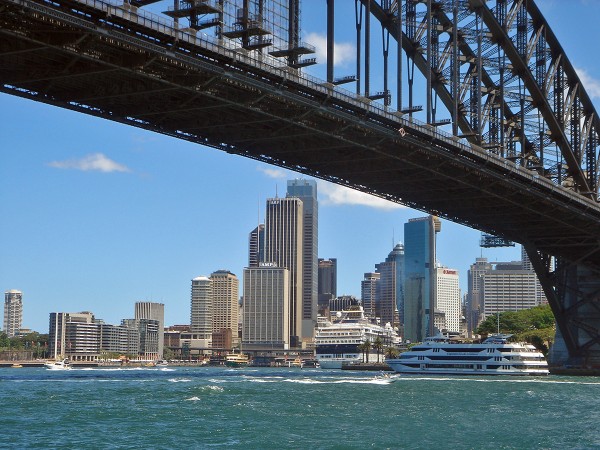 Many of the major industries in Australia are oligopolies/oligopsonies. Examples include banking, telecoms, supermarkets, insurance and iron ore. The dominant firms in these markets have been accused of exploiting their market power, both in charging high prices to consumers and driving down the prices paid to suppliers. The result, it is claimed, is that they have been making excessive profits.
Many of the major industries in Australia are oligopolies/oligopsonies. Examples include banking, telecoms, supermarkets, insurance and iron ore. The dominant firms in these markets have been accused of exploiting their market power, both in charging high prices to consumers and driving down the prices paid to suppliers. The result, it is claimed, is that they have been making excessive profits.
But things may be changing. With the rise of online trading, barriers to entry in these markets have been falling. Many of the new entrants are established firms in other countries and hence already have economies of scale.
The first article below examines the challenge to established oligopolists in Australia.
Articles and blogs
The death of the oligopoly: Australia’s incumbents face new rivals Financial Review (Australia), Michael Smith (21/4/15)
Australian Oligopolies The Grapevine, Adam Dimech (27/12/14)
Paper
Breaking up Australia’s oligopolies Ashurst Australia (14/8/13)
Questions
- Find out which are the major firms in Australia in the five industries identified above. What is their market share and how has this been changing?
- What barriers to entry exist in each of these industries in Australia? To what extent have they been declining?
- What can new entrants do to overcome the barriers to entry?
- What technological developments allow other companies to challenge Foxtel’s pay television monopoly?
- To what extent are developments in the supermarket industry in Australia similar to those in the UK?
- To what extent does Australia benefit from increased globalisation?
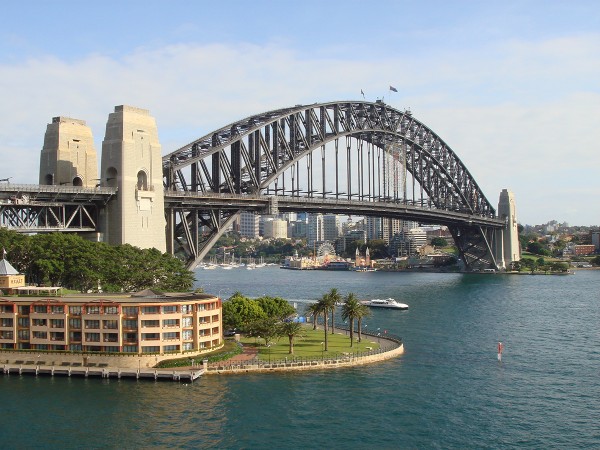 This weekend, Australia will play host to the world’s leaders, as the G20 Summit takes place. The focus of the G20 Summit will be on global growth and how it can be promoted. The Eurozone remains on the brink, but Germany did avoid for recession with positive (just) growth in the third quarter of this year. However, despite Australia’s insistence on returning the remit of the G20 to its original aims, in particular promoting growth, it is expected that many other items will also take up the G20’s agenda.
This weekend, Australia will play host to the world’s leaders, as the G20 Summit takes place. The focus of the G20 Summit will be on global growth and how it can be promoted. The Eurozone remains on the brink, but Germany did avoid for recession with positive (just) growth in the third quarter of this year. However, despite Australia’s insistence on returning the remit of the G20 to its original aims, in particular promoting growth, it is expected that many other items will also take up the G20’s agenda.
In February, the G20 Finance Ministers agreed various measures to boost global growth and it is expected that many of the policies discussed this weekend will build on these proposals. The agreement contained a list of new policies that had the aim of boosting economy growth of the economies by an extra 2% over a five year period. If this were to happen, the impact would be around £1.27 trillion. The agreed policies will be set out in more detail as part of the Brisbane Action Plan.
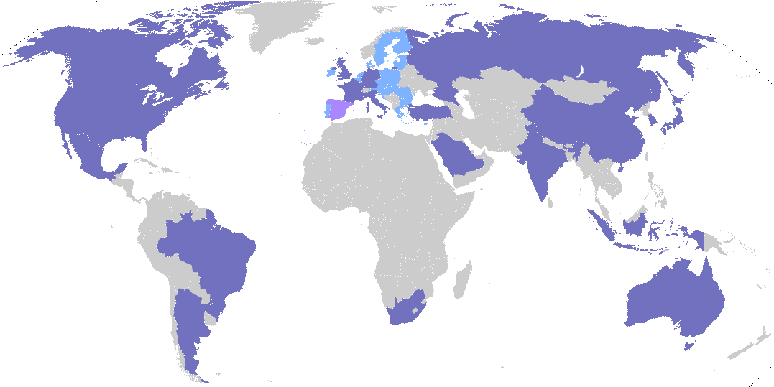 As well as a discussion of measures to promote global growth as a means of boosting jobs across the world, there will also be a focus on using these measures to prevent deflation from becoming a problem across Europe. Global tax avoidance by some of the major multinationals will also be discussed and leaders will be asked to agree on various measures. These include a common reporting standard; forcing multinationals to report their accounts country by country and principles about disclosing the beneficial ownership of companies. It it also expected that the tensions between Russia and Ukraine will draw attention from the world leaders. But, the main focus will be the economy. Australia’s Prime Minister, Tony Abbott said:
As well as a discussion of measures to promote global growth as a means of boosting jobs across the world, there will also be a focus on using these measures to prevent deflation from becoming a problem across Europe. Global tax avoidance by some of the major multinationals will also be discussed and leaders will be asked to agree on various measures. These include a common reporting standard; forcing multinationals to report their accounts country by country and principles about disclosing the beneficial ownership of companies. It it also expected that the tensions between Russia and Ukraine will draw attention from the world leaders. But, the main focus will be the economy. Australia’s Prime Minister, Tony Abbott said:
“Six years ago, the impacts of the global financial crisis reverberated throughout the world. While those crisis years are behind us, we still struggle with its legacy of debt and joblessness…The challenge for G20 leaders is clear – to lift growth, boost jobs and strengthen financial resilience. We need to encourage demand to ward off the deflation that threatens the major economies of Europe.”
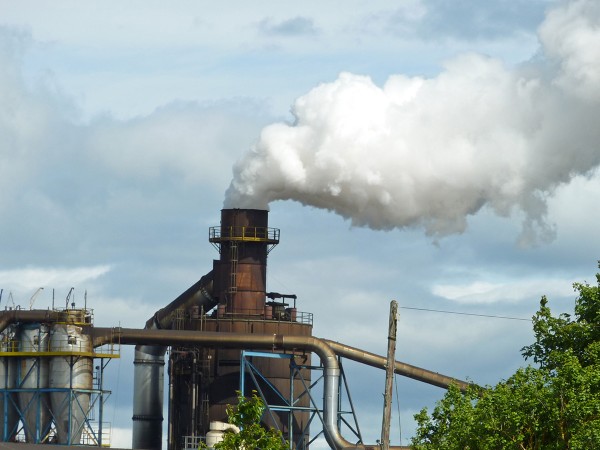 Many people have protested about the lack of action on climate change, but perhaps this has been addressed to some extent by the deal between China and the USA on climate change and Barak Obama’s pledge to make a substantial contribution to the Green Climate Fund. This has caused some problems and perhaps embarrassment for the host nation, as Australia has remained adamant that despite the importance of climate change, this will not be on the agenda of the G20 Summit. Suggestions now, however, put climate change as the final communique.
Many people have protested about the lack of action on climate change, but perhaps this has been addressed to some extent by the deal between China and the USA on climate change and Barak Obama’s pledge to make a substantial contribution to the Green Climate Fund. This has caused some problems and perhaps embarrassment for the host nation, as Australia has remained adamant that despite the importance of climate change, this will not be on the agenda of the G20 Summit. Suggestions now, however, put climate change as the final communique.
Some people and organisations have criticised the G20 and questioned its relevance, so as well as discussing a variety of key issues, the agenda will more broadly be aiming to address this criticism. And of course, focus will also be on tensions between some of the key G20 leaders. The following articles consider the G20 Summit.
Articles
Ukraine and Russia take center stage as leaders gather for G20 Reuters, Matt Siegel (14/11/14)
The G20 Summit: World leaders gather in Brisbane BBC News (14/11/11)
G20: Obama to pledge $2.5bn to help poor countries on climate change The Guardian, Suzanne Goldenberg (14/11/14)
G20 in 20: All you need to know about Brisbane Leaders summit in 20 facts Independent, Mark Leftly (13/11/14)
G20 leaders to meet in Australia under pressure to prove group’s relevance The Guardian, Lenore Taylor (13/11/14)
Australia PM Abbott accuses Putin of bullying on eve of G20 Financial Times, George Parker and Jamie Smyth (14/11/14)
G20: David Cameron in Australia for world leaders’ summit BBC News (13/11/14)
G20 summit: Australian PM Tony Abbott tries to block climate talks – and risks his country becoming an international laughing stock Independent, Kathy Marks (13/11/14)
Incoming G20 leader Turkey says groups must be more inclusive Reuters, Jane Wardell (14/11/14)
Behind the motorcades and handshakes, what exactly is the G20 all about – and will it achieve ANYTHING? Mail Online, Sarah Michael (14/11/14)
Is the global economy headed for the rocks? BBC News, Robert Peston (17/11/14)
Official G20 site
G20 Priorities G20
Australia 2014 G20
News G20
Questions
- What is the purpose of the G20 and which countries are members of it? Should any others be included in this type of organisation?
- What are the key items on the agenda for the G20 Summit in Brisbane?
- One of the main objectives of this Summit is to discuss the policies that will be implemented to promote growth. What types of policies are likely to be important in promoting global economic growth?
- What types of policies are effective at addressing the problem of deflation?
- What impact will the tensions between Russia and Ukraine have on the progress of the G20?
- Why are multinationals able to engage in tax evasion? What policies could be implemented to prevent this and to what extent is global co-operation needed?
- Discuss possible reforms to the IMF and the G20’s role in promoting such reforms.
- Should the G20 be scrapped?
 The UK and Australia are set to sign a free-trade deal at the G7 summit in Cornwall on 11–13 June. This will eventually give tariff-free access to each other’s markets, with existing tariffs being phased out over a 15-year period. It is the first trade deal not based on an existing EU template. The government hopes that it will be followed by trade deals with other countries, including New Zealand, Canada and, crucially, the USA.
The UK and Australia are set to sign a free-trade deal at the G7 summit in Cornwall on 11–13 June. This will eventually give tariff-free access to each other’s markets, with existing tariffs being phased out over a 15-year period. It is the first trade deal not based on an existing EU template. The government hopes that it will be followed by trade deals with other countries, including New Zealand, Canada and, crucially, the USA.  There is clearly a benefit to consumers in both countries from cheaper products, but the gains are likely to be very small. The most optimistic estimate is that the gain in UK GDP will be around 0.01% to 0.02%. Part of the reason is the physical distance between the two countries. For products such as meat, grain and raw materials, shipping costs could be relatively high. This might result in no cost advantage over imports from much nearer countries, such as EU member states.
There is clearly a benefit to consumers in both countries from cheaper products, but the gains are likely to be very small. The most optimistic estimate is that the gain in UK GDP will be around 0.01% to 0.02%. Part of the reason is the physical distance between the two countries. For products such as meat, grain and raw materials, shipping costs could be relatively high. This might result in no cost advantage over imports from much nearer countries, such as EU member states. But the question of price is probably the least worrying issue. Meat and grain is generally produced at lower standards in Australia than in the UK, with various pesticides, fertilisers and antibiotics being used that are not permitted in the UK (and the EU). Unless the trade deal can involve UK standards being enforced on products produced in Australia for export to the UK, UK farmers could be undercut by such imports. The question then would be whether labelling of imported food products could alert consumers to the different standards. And even if they did, would consumers simply prefer to buy the cheaper products? If so, this could be seen as a market failure with consumers not taking into account all the relevant health and welfare costs. Better quality food could be seen as a merit good.
But the question of price is probably the least worrying issue. Meat and grain is generally produced at lower standards in Australia than in the UK, with various pesticides, fertilisers and antibiotics being used that are not permitted in the UK (and the EU). Unless the trade deal can involve UK standards being enforced on products produced in Australia for export to the UK, UK farmers could be undercut by such imports. The question then would be whether labelling of imported food products could alert consumers to the different standards. And even if they did, would consumers simply prefer to buy the cheaper products? If so, this could be seen as a market failure with consumers not taking into account all the relevant health and welfare costs. Better quality food could be seen as a merit good.









